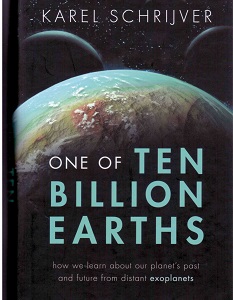No-one knows how many Earth-like planets there are in the galaxy – or the universe – but it has become clear over the past few years that the answer is not “just one”. This author, a stellar astrophysicist specialising in the study of the Sun and the space around it, has plumped for “Ten Billion”, not least because it makes for an interesting book title.
The book begins with a discussion of the ‘astronomical’ numbers involved in the study of the universe and its estimated population of 100 sextillion planetary systems (that’s 100 followed by 21 noughts!). According to the author, “Earth is estimated to be one of several billion Earth-like planets in the Galaxy orbiting within a distance from their stars at which water, if it is present, could exist as a liquid on the planetary surface”.
The book’s 12 chapters cover exoplanets and their stars, the habitability of planets and moons and the search for life. It has a further reading section and an index, and is illustrated with black-and-white photos and a 16-page colour insert. As a result, presentation-wise, it comes across as a somewhat old-fashioned book. Indeed, it is the sort of book that has to be read from cover to cover; there is no dipping in and out of this one. That, in itself, is not a criticism, but some of the carefully nuanced (and thus verbose) language of the scientist could have done with some judicious editing.
Overall, this is an intelligent book based on the scientific understanding of the day. It is small enough to serve as bedtime reading, but don’t expect to finish every chapter in a single session.











